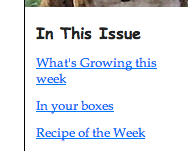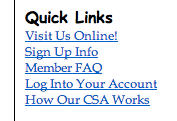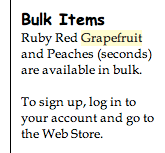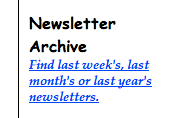I subscribe to a CSA (community supported agriculture). Every week, I get a box of produce from a local farm. The fresh produce on its own is pretty exciting, but I look forward to the weekly newsletter, which often reads like a soap opera!
Each newsletter has a few key goals, dictating its format:
- Describe what’s in the box for the week
- Offer recipes on how to use this week’s produce
- Highlight bulk options available for purchase (flats of strawberries or peaches)
- Updates on current local conditions or regional policies that are impacting the farm
I look forward to the newsletter every week and am excited about the stories in the main body, which cover agricultural politics or happenings on the farm. Recent topics included organic alternatives for pest prevention, how immigration legislation directly impacts the farm, and the effects of hail. She typically uses a lot of humor and descriptive language and images to help you visualize the farm.
Using similar ideas, here are four tips for creating a newsletter that your audience looks forward to reading.
Outline clear goals for your newsletter program
Make sure you’ve identified your goals, and make sure each newsletter send adheres to them. My CSA newsletter illustrates this:
Create engaging content
Create engaging content in the right format to resonate with you audience. Understand their profiles. For example, CSA customers are interested in food, cooking and farming practices.
Your newsletter audience will be far-reaching, everyone from customers to prospects to partners, each with different interests. So it’s important to include relevant items for everyone. Make it easy for readers to jump to the content they are most interested in, whether it’s topical, educational or action-oriented.
Don’t forget the call to action (CTA)!
Many organizations treat their newsletters like a newspaper – lots of articles and content. But don’t forget to to include a clear goal and call to action in each: download additional content, register for an event, request a meeting with a sales rep, sign up for additional information. Make your CTA clear and obvious, and measure your newsletter’s success on how you met those goals and CTA responses.
CTAs in my CSA newsletter include: bulk items available for the season, links to update your subscription, add more money to your account, and more.
Extend your newsletter’s shelf life
Month over month, you produce great content for your newsletters. Giving your subscribers an opportunity to revisit old newsletters to read, at their leisure, is a great way to increase engagement. Create a self-service archive to access more information.
Do you have some tips for creating an engaging newsletter program? Please share your ideas!



